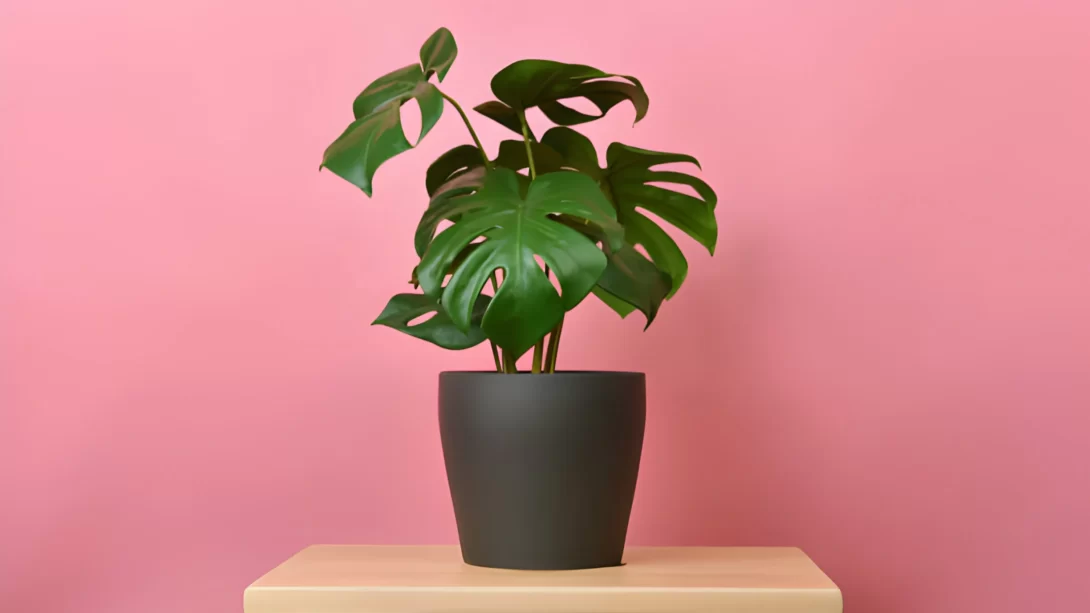Monstera, with its distinctive split leaves and robust growth, has become a favorite among indoor plant enthusiasts. An essential aspect of caring for these tropical beauties is selecting the right pot size, which can significantly impact their health and growth. This guide aims to demystify the process of choosing the perfect pot for your Monstera, ensuring it has the ideal environment to thrive.
Monstera Plants
Monstera plants, including popular varieties like Monstera deliciosa and Monstera adansonii, are known for their lush foliage and aerial roots. They originate from tropical environments, where they often climb large trees. In indoor settings, providing adequate support and space for their roots is crucial. The right pot size plays a vital role in accommodating their rapid growth and extensive root system, influencing not just the plant’s size and health, but also its ability to produce those iconic split leaves.
Factors Influencing Pot Size Selection
When selecting a pot for a Monstera, several factors need consideration:
- Plant Size: The current size of your Monstera dictates the starting point for pot size. A pot that is too large can lead to waterlogging issues, while one too small can restrict growth.
- Growth Rate: Monsteras are fast-growing plants, particularly in the growing season. A pot that offers room for growth without being excessively large is ideal.
- Root System: Monsteras have robust root systems that require adequate space to expand. A cramped pot can lead to a root-bound plant, which hampers health and growth.
- Soil Moisture and Nutrient Availability: The size of the pot affects soil moisture levels and nutrient distribution. Larger pots hold more moisture and nutrients but also require careful watering to avoid waterlogging.
Recommended Pot Sizes for Monstera Plants
The general guideline for Monsteras is to choose a pot that is 2-3 inches larger in diameter than the current one. This size increase provides enough space for root growth without being so large that the soil stays wet for too long. For young Monsteras or smaller varieties like the Monstera Adansonii, a pot around 8-10 inches in diameter is usually sufficient. For mature or larger species like Monstera Deliciosa, pots starting at 12 inches and upwards are more appropriate. It’s crucial to adjust these recommendations based on the specific growth pattern and size of your plant.
Signs Your Monstera Needs a Bigger Pot
Recognizing when your Monstera requires a larger pot is key to maintaining its health. Here are signs indicating it’s time to repot:
- Roots Growing Through Drainage Holes: If you notice roots poking out of the pot’s drainage holes, it’s a clear sign that the plant has outgrown its current space.
- Slowed Growth: A noticeable slowdown in growth, despite proper care, can suggest that your Monstera is root-bound and needs more room to expand.
- Watering Frequency Increases: When water runs straight through the pot without being absorbed, it could mean the roots have filled the pot, leaving little room for soil and moisture.
- Visible Root Circling: If you can see roots circling the surface of the soil or when you gently remove the plant from the pot, it indicates that the roots are cramped and confined.
Choosing the Right Pot Material
The material of the pot is as important as its size. Different materials offer various benefits:
- Plastic Pots: Lightweight and moisture-retaining, plastic pots are a good choice if you tend to under-water your plants. However, they may not offer the best aeration.
- Ceramic or Clay Pots: These materials are heavier and more stable, which is beneficial for larger, top-heavy Monsteras. They allow more air movement through the soil, reducing the risk of root rot. However, they can dry out more quickly than plastic.
- Terracotta Pots: Porous terracotta pots offer excellent breathability for roots, making them a great choice for Monsteras. They help to prevent soil from staying too damp but require more frequent watering.
Potting and Repotting Tips
When potting or repotting a Monstera, use a high-quality potting mix that offers good drainage while retaining enough moisture. Gently tease out the roots if they are densely packed or circling the root ball. When placing your Monstera in the new pot, ensure it sits at the same depth as it was in its previous pot. Fill around the roots with soil, but avoid packing it too tightly, which can hinder root growth and water penetration.
Ongoing Pot Management
Maintaining the right pot environment is crucial for the long-term health of your Monstera. Here are key aspects to manage:
- Drainage: Ensure your pot has adequate drainage holes to prevent waterlogging. This is vital to avoid root rot, a common issue in poorly drained soils.
- Soil Condition: Regularly check the soil for signs of compaction or depletion. Monsteras benefit from a loose, well-draining potting mix rich in organic matter. Refresh or top up the soil as needed to maintain its quality.
- Root Health: Monitor the health of your Monstera’s roots during routine waterings or when adjusting the plant. Healthy roots are typically firm and white or tan in color. Brown, mushy roots indicate overwatering or poor drainage.
Frequency of Repotting Monsteras
Monsteras typically need to be repotted every 18-24 months, but this can vary depending on the plant’s growth rate and environmental conditions. Spring and summer are the best times for repotting, as the plant is in its active growth phase and can recover more quickly from the stress of repotting.
Signs to Watch for Repotting
Keep an eye out for the signs mentioned earlier, such as roots growing through drainage holes or visible at the soil surface. Additionally, if you notice a significant decrease in the time between waterings or if the plant seems less stable in its pot, these could be indicators that it’s time to repot.
Conclusion
Selecting the right size and type of pot for your Monstera is a fundamental aspect of its care. By understanding your plant’s specific needs and responding to its growth, you can ensure that your Monstera remains healthy and continues to bring beauty to your space. Remember, repotting is a normal part of the Monstera’s life cycle and, when done correctly, can significantly boost its growth and vitality. With these guidelines, you’re well-equipped to provide the best home for your Monstera and enjoy its lush, tropical foliage for years to come.



